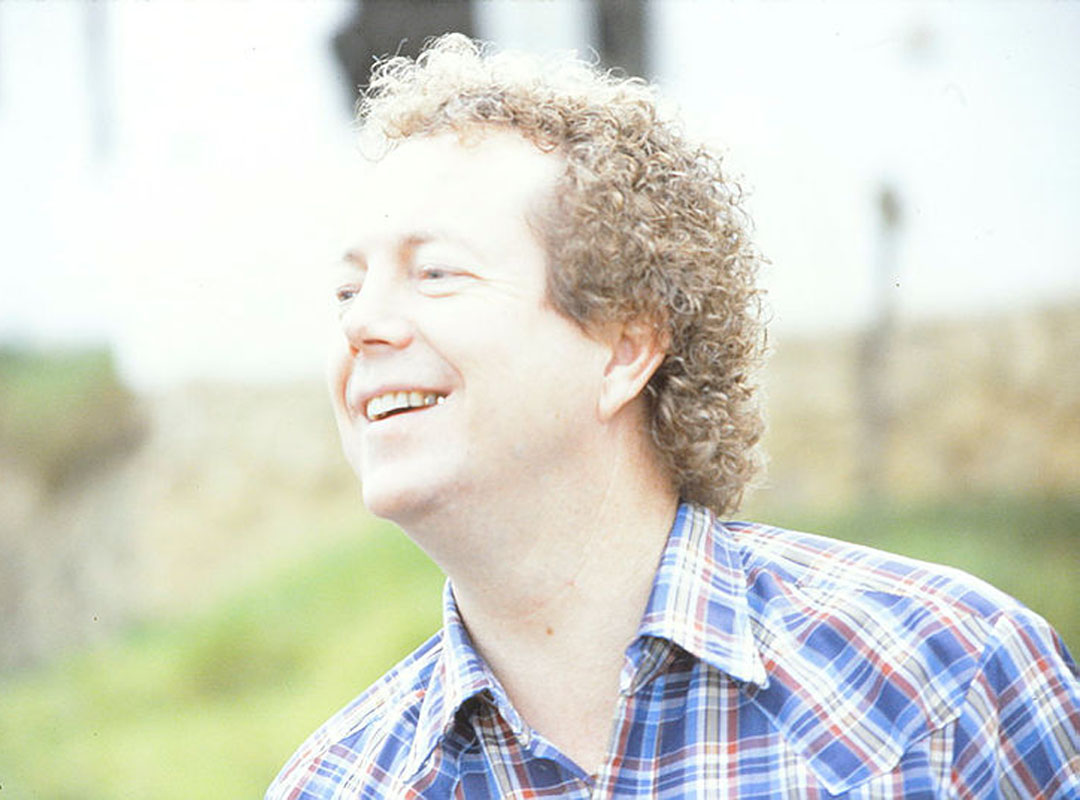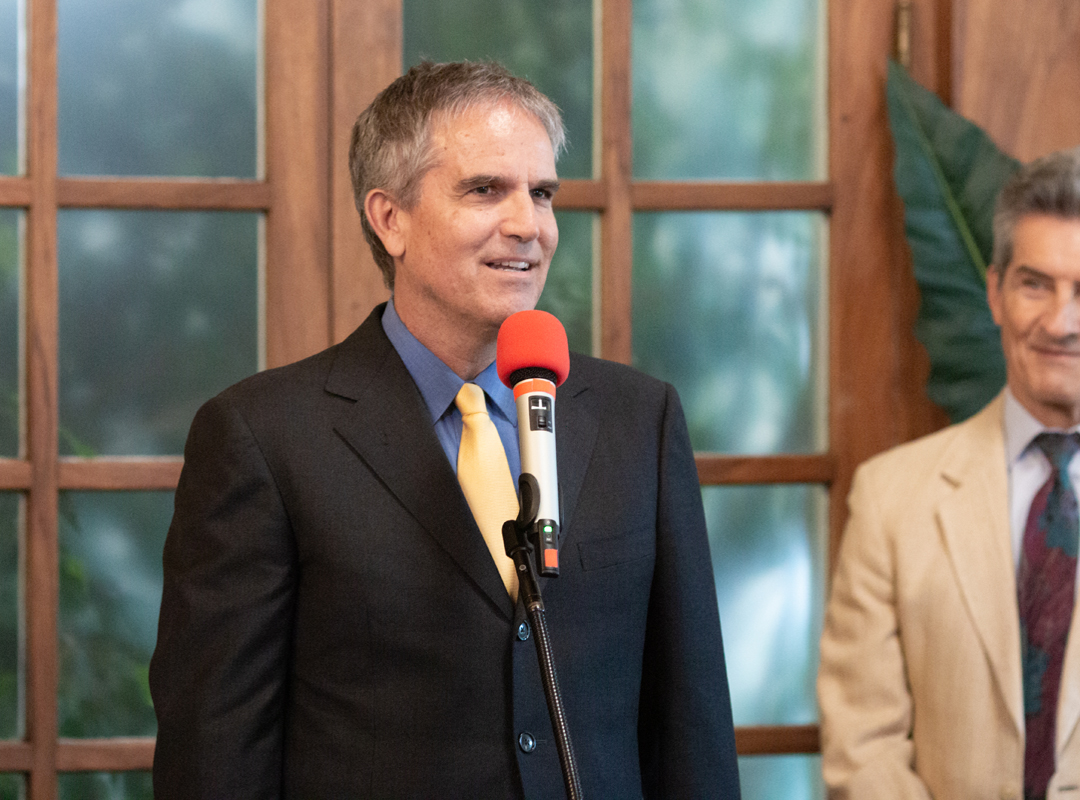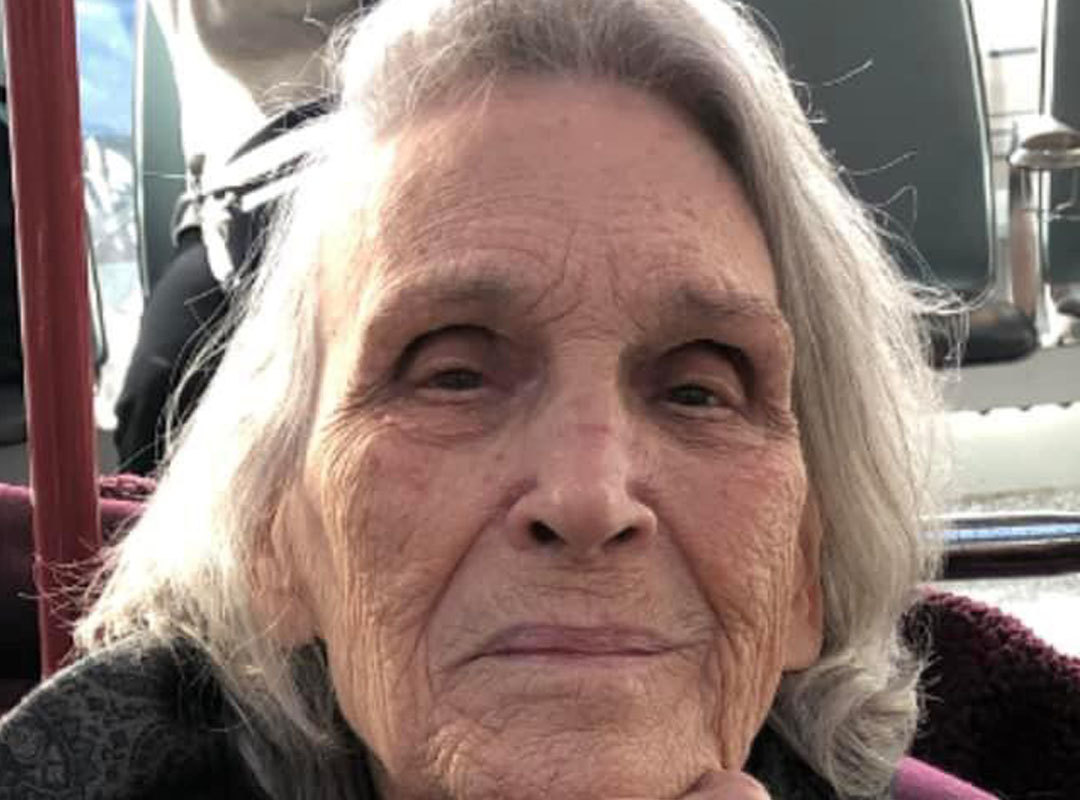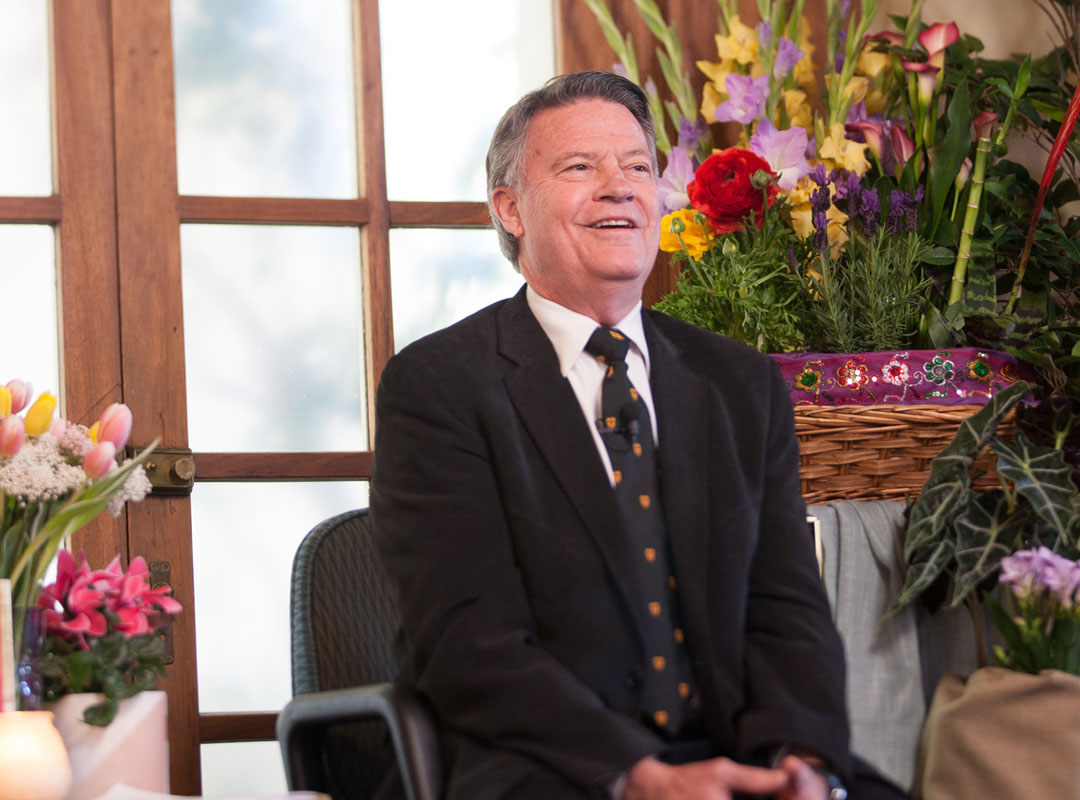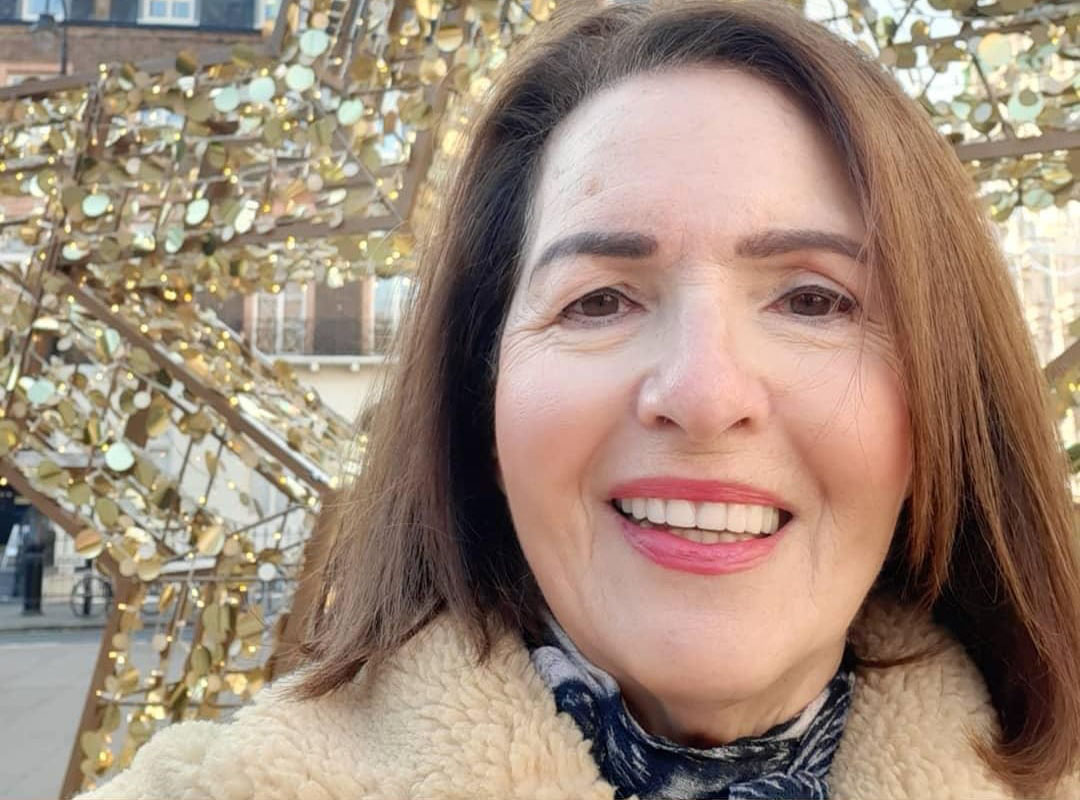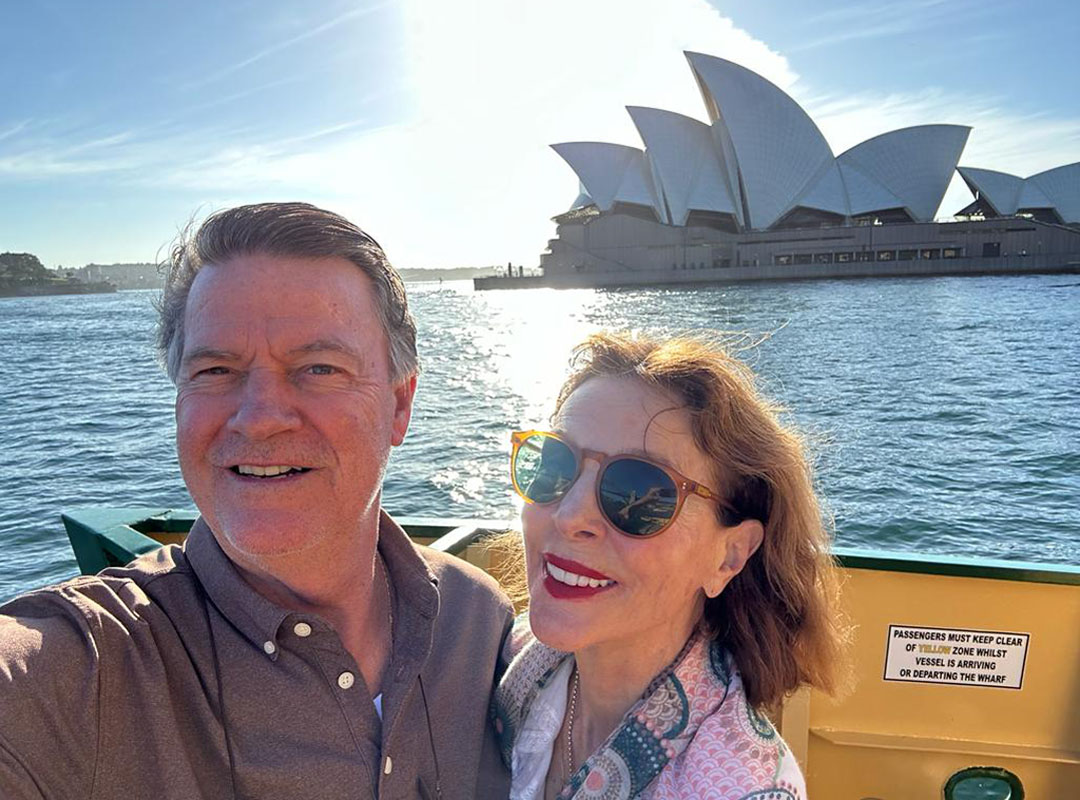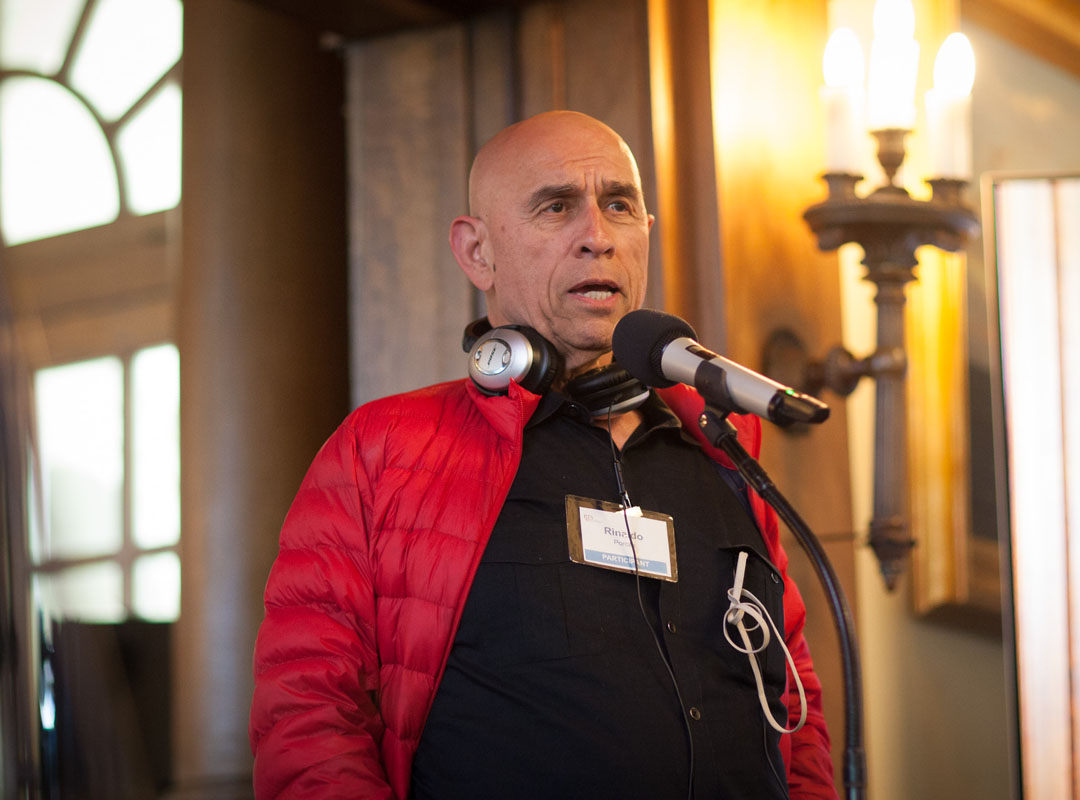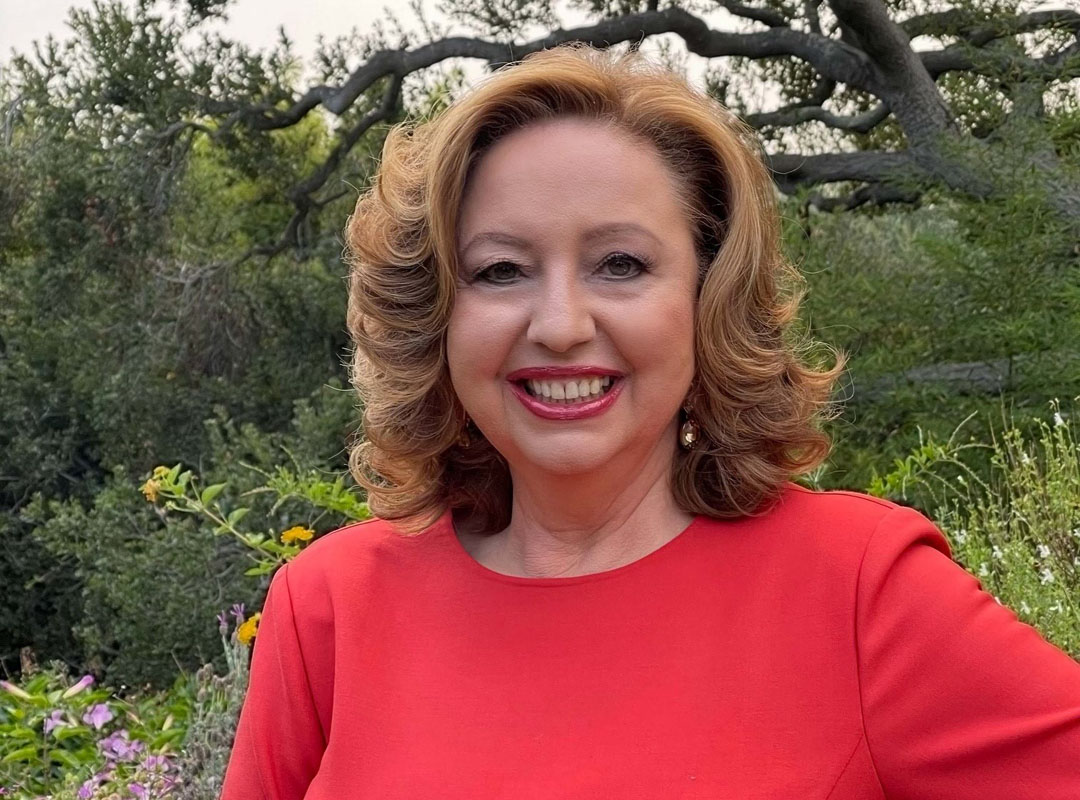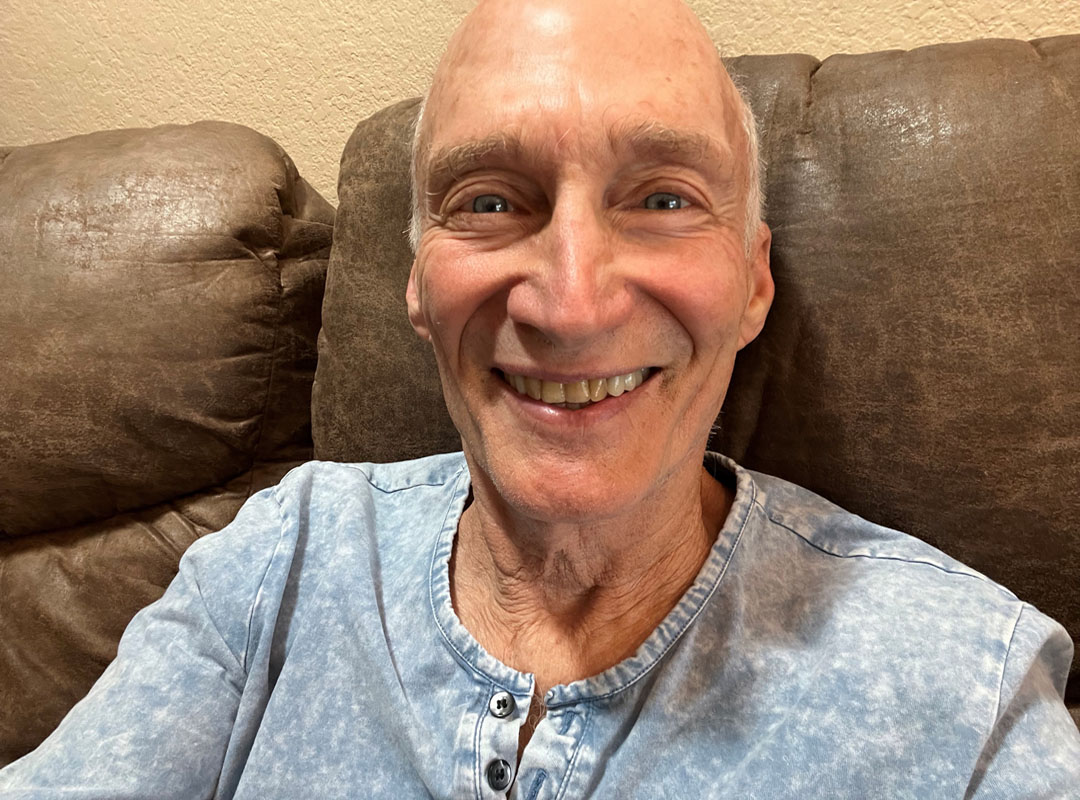 This is part 1 of a 2-part interview with John by Laren Bright
This is part 1 of a 2-part interview with John by Laren Bright
Let’s start talking about peace, and we’ll see where the Spirit takes us.
JM: Peace is something that’s always present, even when we’re not aware of it. Even when things appear to us that are contradictory, peace is the quality that is the calm. It’s the calm not just before the storm, but during the storm and after the storm. It’s the quality that somehow things are right even when we don’t realize it or we don’t understand what’s going on. It’s not just the calm part or eye of the hurricane, but it’s also when things are extremely dynamic, powerful, and changing. There’s a peace in that as well.
Can you give us a definition of peace?
JM: I like one from John-Roger: “Peace is the cessation of againstness.” When we are in our creativity, our choices, when we stop taking a position of resistance, fighting, or againstness, that’s when we get to realize the power and the fullness of peace.
How does peace out in the world differ from inner peace?
JM: One way I relate to peace in the world is the way we look upon nature. There is a peace in the way things work, in how things happen naturally. There is a process of life, partaking in a giving and a taking. Inside, the way I relate to peace is like breathing in and breathing out. If we allow ourselves to do that naturally, there’s peace. If we resist, if we don’t fully breathe in or we don’t fully breathe out, then there’s an interruption in that process that is unnecessary. We’re now starting to disturb the peace that’s naturally present. I look upon peace as a natural state. It’s an innate part of who we are to live in peace, to be at peace. It is we who interrupt that process and separate from that process.
What are the things in life that tend to pull you off peace?
JM: I don’t look at what pulls me off peace as “a thing.” The reality is that I am the one who chooses to disconnect from the peace that’s present by focusing on negative things. It is I who allow my perception of the negative things that I am aware of, whether they are disturbances or unexpected events, to take me into a place where I am separate from the peace.
How can I maintain my awareness of what is going on in the world and still maintain my own peace?
JM: We each have an individual choice toward peace. That’s where it begins.
We really don’t have to be worried about solving the world’s problems or the issues that we find about peace. It’s much more important to begin with ourselves. We find our own peace by being aware of peace that is present. Then, as we have that awareness, it allows us to do peaceful things, to come in peace and to be at peace with what is present.
How does that fit into the process of maintaining the peace when people actually come at us? How do we maintain peace and still deal with that?
JM: One way is to not let yourself be hurt. If someone is attempting to hurt you, get out of harm’s way. It’s not part of peace to hurt or allow ourselves to be hurt. That’s what I would consider an unnecessary act.
Part of neutralizing that kind of action is not to return it, to take that energy and transform it to something where we are putting it back to that person in such a way that they realize what they are doing is hurting themselves. The idea is that we use an attack or some form of againstness toward us, not as a way to then attack, but as a cause to find the harmony, to use it as a way to neutralize the againstness.
Is that somehow related to the “turn the other cheek” approach to things?
JM: I think you are referring to what was attributed to Jesus when he said, “turn the other cheek.” I look at the practical side of that. If someone slaps my cheek, I may say, “Hey, if you need to slap, here’s another cheek for you to work out whatever it is that you need to work out.” But if it’s, “I’m going to break your jaw,” I would say, “Don’t do that.” Stay out of that, move out of it, if you can.
Suppose someone has hit you or sued you. How do you respond?
JM: What really works is to consider others. Why would they sue me? Why would they hit me? Why are they striking at me? I take on a responsibility to understand. I look at the reference for “what’s best here?” It isn’t just about a personal version of what’s best, although it’s important that I not exclude what’s best for myself as a consideration.
One of the great qualities of a peacemaker is to strive to understand when we don’t understand. I can ask, “What is it about this person or this situation that they would want to strike out?” And, in my compassion and understanding, perhaps I could help them. Perhaps we could look at something to make it better, so that they can see it’s not necessary to strike out, as there is a better way.
It seems that violence is such an accepted approach for settling disputes.
JM: It’s like sowing a seed that doesn’t come up. Violence isn’t the kind of thing that bears flowers. Violence begets violence. If you live by the sword, you die by the sword. The violence that is sown is going to come back. It’s going to visit you. Violence can appear as though it brings some kind of solution, but it also always brings a price. The price violence brings is hurt, and that hurt has a tendency to come up in another form of hurt. When we have been hurt, it takes a great deal of patience and understanding to allow that hurt to heal into something that will not be “now I’m going to hurt you.”
If someone is physically attacked, and as a response they hit back, that can be seen as a neutralizing process, as a way of communicating, “Stop it!” It’s not about “I want to hurt you”; it’s about “I want to stop you from hurting me.” You look at what you are drawing upon in the response. If it’s a stopping action, a neutralizing action, then that is much more workable than the idea that “if they hurt me, then I need to hurt them. I need to pay them back. I need to get some revenge.” That kind of thing just sows more violence, more hurt, and it doesn’t really solve whatever is the cause of the conflict or the cause of the violence.
Do you think there is one essential thing that is the cause of violence?
JM: What I’ve seen for a long, long time is that the cause of violence is hurt. The perpetrator feels hurt, and now he wants to hurt.
If someone is coming toward me and they’re angry and they’re hurt, how can I respond in that moment without using violence?
JM: One of the great neutralizers is to make contact with their Soul, their spirit. It has been said long, long ago that the eyes are the window of the Soul. That would be a very important contact to make. Look at them. It’s amazing what that can do, just to look at them and to have the presence to look at them neutrally: “What are you doing? I’m looking at you to comprehend what you are doing.” That can be a very powerful action to dissipate that energy, to take on the energy and to exhaust the response.
I look at peace as a transmission, an energy that has a vibration that is a source of attunement from one consciousness to another. I’m aware of a peaceful, calm presence. It really is a neutral kind of response: “I’m not here to change you. I’m not here to make you wrong. I’m with you. I’m here in a place of letting you be.” But it’s also letting myself be, which is a very important part of it. It’s a consciousness of freedom. As I hold that consciousness of peace, it transmits and has a way of neutralizing the disturbance and againstness.
In addition to being responsible for our own peace, do you see a way of participating more fully in that in the world so the world becomes a more peaceful place?
JM: The way I see that is to see the world at peace. If we can hold that thought, that thought has a power. The thought is witnessing a reality of peace in the world. By witnessing the possibility that it can take place and holding it in my consciousness, then that becomes something that is transmitting into the world. It’s like a seed of peace that I’m planting from my consciousness into the world.
Now, how powerfully can one perform that? Can one person hold peace in such a way that the world transforms? Well, it’s larger than one person; this person would be holding that thought in such a way as it becomes like an epidemic of peace. And that’s how it would be done. It sounds strange to speak of peace as an epidemic or disease. Well, what if you could have something that is contagious, as a positive outcome and manifestation? There would be something that transmits that could go to a level that is beyond our comprehension. Suddenly we put down our swords and the instruments and causes of violence.
It’s like a father who is about to be violent toward his son, and something comes over the father that makes him realize, “You really don’t want to do this. You really love your son.” Deep down, that’s the more powerful action, the realization that “I love my son. Why would I want to hurt him?” And there’s a transformation, going from “I’m ready to hurt or even kill my son” to “I’m not going to hurt or kill my son. I’m going to love him. I’m going to nurture him.”
In the media, it seems virtually impossible to sell a show that doesn’t have violence as a way to solve problems. How can we work with something like that when the news and television shows are telling us that violence is what’s happening?
JM: I was watching a film recently about people who were heavily involved in drugs and all the things around that. But in the last part of it, there was a real redemption and conversion that was quite magnificent in the way I experienced it. It made me realize that it was worth going through all of that negative process to see what actually solves the conflicts and the everyday challenges that we all deal with. The truth is, goodness is what resolves all things. If you leave things in a place of violence at the end and say, “That’s the resolution,” that’s a lie.
The reality is that the resolutions that endure are manifestations of loving, caring, and the consciousness of peace toward all. These resolutions still allow you to be different from me, leading to appreciation and respect rather than intolerance and attack.
Talking spiritually now, do you think it is permitted for there to be complete peace on the planet?
JM: Yes. Absolutely, I do.
I look at peace as a choice that’s available, available to all. It’s available all across the planet. There is no place where peace is not present, where peace is not available as a choice in response to every situation.
How is it that we don’t know this? Why doesn’t it seem that way? It’s our attitude inside that makes all the difference. It’s how we perceive things. We miss the peace. We don’t realize the peace that is in things. When we do, we start seeing better ways. We start becoming aware of choices that we have made that were less than peaceful, less than what would be best for all. We start realizing choices that contribute toward a greater harmony and quality of life.
I was watching a documentary-type film about a very small town. The maker of the film had put together a series of stories, using photographs that were available over a period of time around the turn of the century. He told a very violent story about this town, so that what we were seeing in the course of ten years was a whole lot of violence and death and mayhem. One would think this must have been a cursed place. Then I realized that if you isolated all these incidents or all that goes on in the course of ten years, this was probably somewhat ordinary. You could find a lot of violence and death and disturbance, but, in between, there were a lot of things that were good, that were blessings and a source of happiness. That’s the greater reality of what is going on.
If peace is a natural state, then why do we have wars every generation?
JM: I wish I knew the answer to that. We don’t have to have war. It’s not necessary. Why would someone choose to enter into war rather than have peace? I don’t have a good answer for that, but at some point it’s important that somebody says, “Stop! Just because the sins of your father have been visited on you doesn’t mean you have to visit those same sins on your child.” Somebody has to have the wit to say, “No, this is not necessary. There is a better way, and I refuse to hit back.”
It takes great courage, great strength, great patience, and great understanding to stop these cycles. And even though peace begins with each person, lasting peace on Earth will require cooperation on a mass scale. It may require a group of people saying, “We are not going to be violent.” Somebody once said, “What if they called a war and nobody came?” They had the idea that just because there is a cause for violence, this doesn’t mean we have to be violent as a response.
What are the things that you do in your life that bring you back when you get pulled off your peace?
JM: Let’s say that I’m not acting peaceful, that I’m not a peacemaker in the way I’m expressing myself. As I’m aware of that, that awareness is, “This is not like me; this is not the way to behave or express myself.”
That takes a certain amount of self-awareness.
JM: Yes, but I also have a wife who will say, “This is not like you.” [Laughter] And my kids are a wonderful reflection: “Why are you doing that? Why did you talk to me like that? Did you have to raise your voice when you said that?” Those are excellent questions that deserve an answer. “Yes, there was some anger in there, but let’s get to the message. The message is still there. Pardon the anger, pardon the raised voice.”
Did you actually say this to your daughter?
JM: No. [Laughter] But I have said things like this.
What do you tell your daughter or your son about how to respond when children come to them practicing violence?
JM: That violence isn’t really a way to solve anything. Yet if you need to forcibly stop somebody from hurting you or somebody else, that’s very understandable.
When I was a peace officer, we talked about a weapon as “stopping power.” That’s how it was referred to. If somebody was violent, your job as a peace officer was to restore the peace, and here’s an instrument, called a gun with bullets. Unfortunately, they may die as a result, but you use the necessary force to stop them. Now, with technology, there are a lot of different kinds of methods, like tear gas and tazer guns, that are not as severe but that are still violent.
I think we would really serve ourselves to continually look for a better way. Get the situation “under control” to allow the emotions to have a chance to cool off. There are those who are, let’s call them “soldiers of peace,” people who are willing to put their bodies on the line for peace. There are casualties. There is a price that is paid to uphold the peace. But if our point of view is, “The cause of peace versus the cause of war” or “They are not worthy of living; we have some kind of right to remove them from the face of the earth,” that attitude is a cause of ongoing disturbance.
A greater reality is that this is a planet for all. Each person on the planet has a right to be here. That, to me, is a consciousness of peace. I may not agree with you. I may find it very difficult to deal with your ways of living and your expression. But, in the middle, there is a place of peace that allows for those differences. I would look upon that as a form of compassion, that I have a place that will tolerate your differences, and I can put aside my preferences and embrace your preferences.
Something that I find in great cultures is an attitude that “you as a guest are welcome” versus “get off my land!” There’s an attitude not only of welcoming but also accommodating you, so that I would ask, “What would you like?” and I would make an offering to you that represents that I care about you, I respect you, I honor you. Those qualities ask me to go outside my preferences and embrace your way as though it is mine.
What would you tell Arab teachers and Israeli teachers to tell their students?
JM: Well, I would much rather it become a process of showing and experiencing. That doesn’t have to be something that is done in an official or formal way. Just allowing them to come together and talk about a neutral curiosity, an interest: “What do you eat for breakfast? Tell me about your clothes. You are someone I can learn from.” And having this appreciation for the differences.
When I look at how violence works, I see that in order to justify the violence, those whom the violence is being perpetrated upon are looked upon in a demeaning way: “They’re monsters. They’re beasts. They’re gooks.” Somehow they are always less than human. “They’re not like us.” And somehow the image is, “They deserve to die.” Or there will be some great cause: “Look what they did to our fathers and our mothers, our daughters and our wives.” And, of course, the seed of violence will return.
But if I ask, “How does breathing work for you?” I am going to find out that it works very similarly. “How does hunger work for you? What color is your blood? Whoa, that’s interesting. It’s very similar to the color of my blood.” It is important for us to realize that the more powerful reality of who we are, is that we are the same. That’s what is more powerful than our differences.
Baruch Bashan
To read Part 2 of this interview on Peace with John Morton, Click here .







